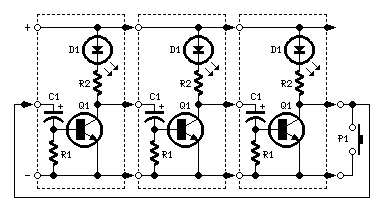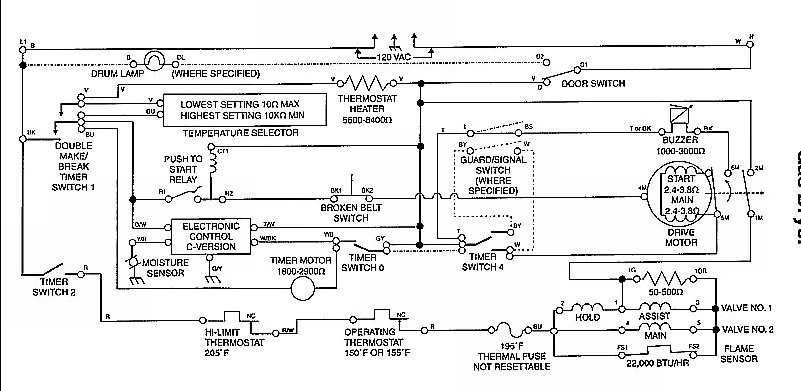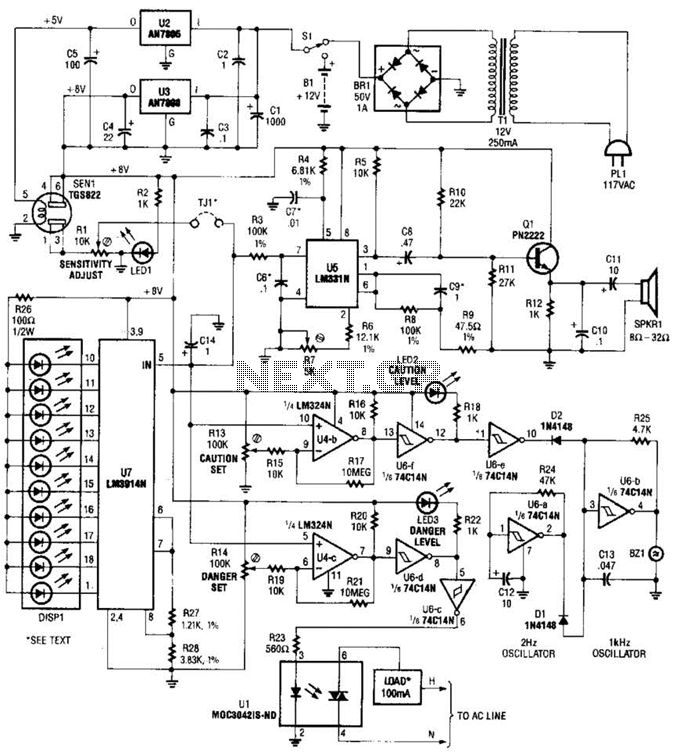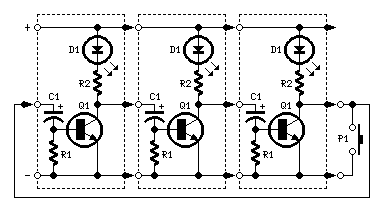
Gas Discharge Lamps Ballasts and Fixtures
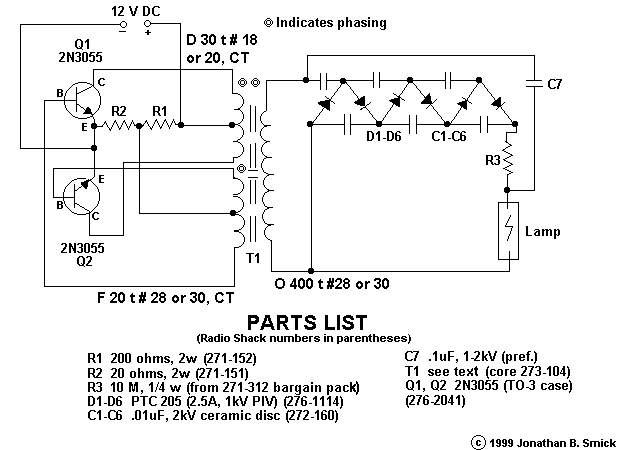
The use of electrically excited gas discharges significantly predates the invention of the incandescent lamp. Physics laboratories, both historical and contemporary, utilize various gas-filled tubes for multiple applications, including light generation for spectroscopy, materials analysis, gas dynamics studies, and laser pumping. A review of any scientific supply catalog reveals a wide range of gas-filled tubes in diverse shapes and sizes. Gas discharge lamps are prevalent in modern lighting technology, encompassing common fluorescent lighting for residential and office use, LCD backlights for laptops, high-intensity discharge lamps for efficient area lighting, neon and miniature indicator lamps, germicidal and tanning lamps, neon signs, photographic electronic flashes and strobes, arc lamps for industrial applications and audiovisual projectors, among others. Gas discharge automotive headlights are emerging as well. The unique light emitted from gas discharge tubes has occasionally been exploited by fraudsters in various dubious devices claiming to cure ailments or facilitate communication with the deceased. Unlike incandescent lamps, gas discharge lamps do not contain a filament and do not generate light by heating a solid material (though heat may be a byproduct). Instead, the gas atoms or molecules inside a glass, quartz, or translucent ceramic tube are ionized by an electric current or a radio frequency/microwave field in proximity to the tube, resulting in light generation, typically visible or ultraviolet (UV). The emitted color is influenced by the gas mixture, pressure, and the type and magnitude of the electric current or RF power. This document primarily addresses directly excited gas discharge lamps where an AC or DC electric current flows through the gas. Fluorescent lamps represent a specific category of gas discharge lamps where the electric current generates mostly invisible UV light, which is converted into visible light by a phosphor coating on the tube's interior. The subsequent sections discuss two categories of gas discharge lamps: low-pressure neon tubes used in signage and displays, and high-intensity discharge lamps designed for efficient area and directional lighting. Fixtures for gas discharge lamps may require starting voltages of up to 30,000 V, depending on the technology, and are often not isolated from the power line. Neon signs are powered by transformers or electronic ballasts that can produce voltages exceeding 15,000 V. Consequently, it is essential to treat these devices with caution, as they may pose a risk of electric shock. Probing a live fixture is generally unnecessary; most issues can be diagnosed through visual inspection or with an ohmmeter or continuity tester when the device is unplugged. Discharge lamps and fixtures using iron ballasts are typically inert when disconnected. Even if small capacitors are present within the ballast for radio frequency interference (RFI) prevention, they are unlikely to pose a significant risk. However, it is critical to ensure the device is unplugged before any interaction. In contrast, fixtures utilizing electronic ballasts can contain charged capacitors that may deliver a harmful shock, so it is advisable to avoid opening the ballast module and to check for voltage between its outputs with a voltmeter prior to any contact. Troubleshooting the electronic ballast module follows a process akin to that of a switch-mode power supply. The pulse starters found in some high-intensity discharge lamps can generate voltages up to 30 kV during the ignition process, necessitating strict avoidance of contact with such high voltages.
Gas discharge lamps operate on the principle of ionizing gas to produce light, which can be categorized into several types based on their application and design. The primary components of these lamps include the gas-filled tube, electrodes, and the ballast, which regulates the electric current. The gas inside the tube can vary, with common choices including neon, argon, xenon, and mercury vapor, each contributing distinct colors and properties to the emitted light.
In low-pressure neon tubes, the gas is often mixed with other gases or phosphors to achieve specific colors for signage. The tube's construction, typically glass, allows for the bending of shapes and designs, making neon signs visually appealing. High-intensity discharge lamps, on the other hand, are designed for applications requiring substantial illumination, such as street lighting and industrial lighting. These lamps operate at higher pressures and temperatures, utilizing a combination of metal halides and other gases to produce bright, white light.
The electronic ballast plays a critical role in the operation of gas discharge lamps, providing the necessary starting voltage and regulating the current during normal operation. These ballasts can be more efficient than traditional electromagnetic ballasts, offering benefits such as reduced energy consumption and improved light quality. However, they also require careful handling due to the potential presence of high-voltage components.
Safety precautions are paramount when working with gas discharge lamps and their associated fixtures. Proper training and understanding of the electrical characteristics of these devices are essential for anyone involved in their installation, maintenance, or repair. It is advisable to utilize insulated tools, wear appropriate personal protective equipment, and adhere to established safety protocols to mitigate the risks associated with high-voltage electrical systems.The use of electrically excited gas discharges significantly predates the invention of the incandescent lamp. Physics labs of yesteryear as well as today have use of a variety of gas filled tubes used for numerous purposes involving light generation including spectroscopy, materials analysis, studies of gas dynamics, and laser pumping.
Look throug h any scientific supply catalog and you will see many different types of gas filled tubes in all shapes and sizes. Gas discharge lamps are used in virtually all areas of modern lighting technology including common fluorescent lighting for home and office - and LCD backlights for laptop computers, high intensity discharge lamps for very efficient area lighting, neon and other miniature indicator lamps, germicidal and tanning lamps, neon signs, photographic electronic flashes and strobes, arc lamps for industry and A/V projectors, and many more.
Gas discharge automotive headlights are on the way - see the section: "HID automotive headlights". Because of the unusual appearance of the light from gas discharge tubes, quacks and con artists also have used and are using this technology as part of expensive useless devices for everything from curing cancer to contacting the dead. Unlike incandescent lamps, gas discharge lamps have no filament and do not produce light as a result of something solid getting hot (though heat may be a byproduct).
Rather, the atoms or molecules of the gas inside a glass, quartz, or translucent ceramic tube, are ionized by an electric current through the gas or a radio frequency or microwave field in proximity to the tube. This results in the generation of light - usually either visible or ultraviolet (UV). The color depends on both the mixture of gasses or other materials inside the tube as well as the pressure and type and amount of the electric current or RF power.
(At the present time, this document only deals with directly excited gas discharge lamps where an AC or DC electric current flows through the gas. ) Fluorescent lamps are a special class of gas discharge lamps where the electric current produces mostly invisible UV light which is turned into visible light by a special phosphor coating on the interior of the tube.
See: Fluorescent Lamps, Ballasts, and Fixtures for more info. The remainder of this document discusses two classes of gas discharge lamps: low pressure `neon` tubes used in signs and displays and high intensity discharge lamps used for very efficient area and directional lighting. Fixtures for gas discharge lamps may use up to 30, 000 V while starting depending on technology. And, they are often not isolated from the power line. Neon signs are powered by transformers or electronic ballasts producing up to 15, 000 V or more. Thus, the only safe way to work with these is to assume that they are potentially lethal and treat them with respect.
Electric shock. There is usually little need to probe a live fixture. Most problems can be identified by inspection or with an ohmmeter or continuity tester when unplugged. Discharge lamps and fixtures using iron ballasts are basically pretty inert when unplugged. Even if there are small capacitors inside the ballast(s) or for RFI prevention, these are not likely to bite.
However, you do have to remember to unplug them before touching anything! However, those using electronic ballasts can have some nasty charged capacitors so avoid going inside the ballast module and it won`t hurt to check between its outputs with a voltmeter before touching anything. Troubleshooting the electronic ballast module is similar to that of a switchmode power supply. See the document: Notes on the Troubleshooting and Repair of Small Switchmode Power Supplies The pulse starters of some high intensity discharge lamps may produce up to 30 kV during the starting process.
Obviously, contact with this voltage should be avoided keeping in mind that 30 kV can jump over an in 🔗 External reference
Gas discharge lamps operate on the principle of ionizing gas to produce light, which can be categorized into several types based on their application and design. The primary components of these lamps include the gas-filled tube, electrodes, and the ballast, which regulates the electric current. The gas inside the tube can vary, with common choices including neon, argon, xenon, and mercury vapor, each contributing distinct colors and properties to the emitted light.
In low-pressure neon tubes, the gas is often mixed with other gases or phosphors to achieve specific colors for signage. The tube's construction, typically glass, allows for the bending of shapes and designs, making neon signs visually appealing. High-intensity discharge lamps, on the other hand, are designed for applications requiring substantial illumination, such as street lighting and industrial lighting. These lamps operate at higher pressures and temperatures, utilizing a combination of metal halides and other gases to produce bright, white light.
The electronic ballast plays a critical role in the operation of gas discharge lamps, providing the necessary starting voltage and regulating the current during normal operation. These ballasts can be more efficient than traditional electromagnetic ballasts, offering benefits such as reduced energy consumption and improved light quality. However, they also require careful handling due to the potential presence of high-voltage components.
Safety precautions are paramount when working with gas discharge lamps and their associated fixtures. Proper training and understanding of the electrical characteristics of these devices are essential for anyone involved in their installation, maintenance, or repair. It is advisable to utilize insulated tools, wear appropriate personal protective equipment, and adhere to established safety protocols to mitigate the risks associated with high-voltage electrical systems.The use of electrically excited gas discharges significantly predates the invention of the incandescent lamp. Physics labs of yesteryear as well as today have use of a variety of gas filled tubes used for numerous purposes involving light generation including spectroscopy, materials analysis, studies of gas dynamics, and laser pumping.
Look throug h any scientific supply catalog and you will see many different types of gas filled tubes in all shapes and sizes. Gas discharge lamps are used in virtually all areas of modern lighting technology including common fluorescent lighting for home and office - and LCD backlights for laptop computers, high intensity discharge lamps for very efficient area lighting, neon and other miniature indicator lamps, germicidal and tanning lamps, neon signs, photographic electronic flashes and strobes, arc lamps for industry and A/V projectors, and many more.
Gas discharge automotive headlights are on the way - see the section: "HID automotive headlights". Because of the unusual appearance of the light from gas discharge tubes, quacks and con artists also have used and are using this technology as part of expensive useless devices for everything from curing cancer to contacting the dead. Unlike incandescent lamps, gas discharge lamps have no filament and do not produce light as a result of something solid getting hot (though heat may be a byproduct).
Rather, the atoms or molecules of the gas inside a glass, quartz, or translucent ceramic tube, are ionized by an electric current through the gas or a radio frequency or microwave field in proximity to the tube. This results in the generation of light - usually either visible or ultraviolet (UV). The color depends on both the mixture of gasses or other materials inside the tube as well as the pressure and type and amount of the electric current or RF power.
(At the present time, this document only deals with directly excited gas discharge lamps where an AC or DC electric current flows through the gas. ) Fluorescent lamps are a special class of gas discharge lamps where the electric current produces mostly invisible UV light which is turned into visible light by a special phosphor coating on the interior of the tube.
See: Fluorescent Lamps, Ballasts, and Fixtures for more info. The remainder of this document discusses two classes of gas discharge lamps: low pressure `neon` tubes used in signs and displays and high intensity discharge lamps used for very efficient area and directional lighting. Fixtures for gas discharge lamps may use up to 30, 000 V while starting depending on technology. And, they are often not isolated from the power line. Neon signs are powered by transformers or electronic ballasts producing up to 15, 000 V or more. Thus, the only safe way to work with these is to assume that they are potentially lethal and treat them with respect.
Electric shock. There is usually little need to probe a live fixture. Most problems can be identified by inspection or with an ohmmeter or continuity tester when unplugged. Discharge lamps and fixtures using iron ballasts are basically pretty inert when unplugged. Even if there are small capacitors inside the ballast(s) or for RFI prevention, these are not likely to bite.
However, you do have to remember to unplug them before touching anything! However, those using electronic ballasts can have some nasty charged capacitors so avoid going inside the ballast module and it won`t hurt to check between its outputs with a voltmeter before touching anything. Troubleshooting the electronic ballast module is similar to that of a switchmode power supply. See the document: Notes on the Troubleshooting and Repair of Small Switchmode Power Supplies The pulse starters of some high intensity discharge lamps may produce up to 30 kV during the starting process.
Obviously, contact with this voltage should be avoided keeping in mind that 30 kV can jump over an in 🔗 External reference


